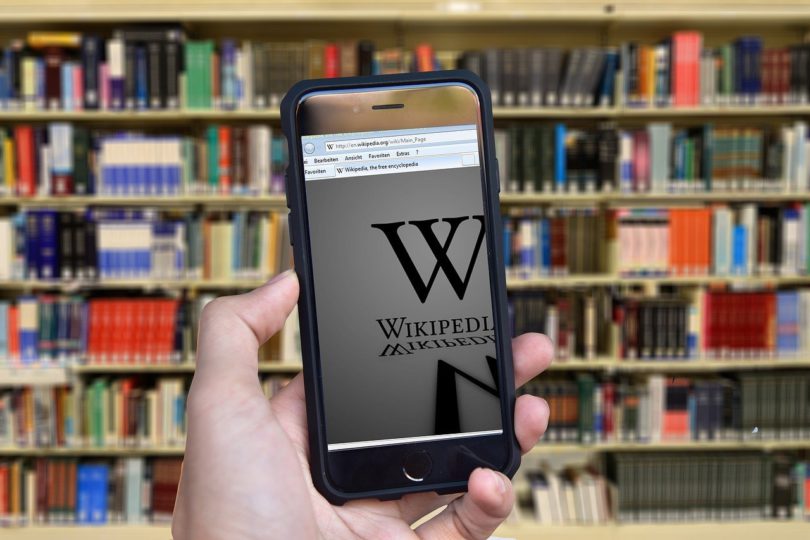It’s strange to reflect on how much we now rely on Wikipedia, especially if you grew up being warned to never trust it. Once dismissed as a casual playground for students and amateurs, the site has evolved into a surprisingly dependable and endlessly fascinating reference. Quick to search, rigorously cited, and full of curious side paths to explore, it has quietly become a cornerstone of modern knowledge—and a small triumph for anyone who remembers their middle school teachers shaking their heads at it.
This transformation didn’t happen by accident. Countless editors, volunteers, and administrators have labored for decades to build a reputation for accuracy. “We know we have a responsibility to get it right and particularly in this era when there’s so much misinformation,” Wikipedia co-founder Jimmy Wales told the BBC in 2021. “People trust us to at least try to get it right, and that’s more than you can say for some places.”
Now, however, Wikipedia faces a new challenge: AI-generated content. The rise of large language models has unleashed a wave of automatically generated text across the internet, threatening to blur the line between human insight and algorithmic output. Wikipedia is taking this threat seriously, publishing a detailed guide for editors on spotting AI writing—an evolving catalog of common patterns, specific to the platform.
The guide is organized into several categories, each illustrated with real-world examples from Wikipedia itself. The “Language and tone” section flags odd phrasings and unnatural rhythms typical of AI output. “Style” highlights telltale quirks, from lists that feel formulaic to strange punctuation choices like overused em dashes. “Communication intended for the user” points out instances where careless editors might leave AI prompts or overly flattering, robotic-sounding language in the text.
These patterns reveal interesting insights about how AI functions. Many models default to safe, statistically common expressions, smoothing over nuance or rare facts. This can make descriptions appear generic or overly positive—a sort of digital noise that obscures subtle detail. In practice, an AI might describe a historical figure as “remarkably important” while gradually turning the description into something bland and indistinct.
Wikipedia also considers technical markers, such as formatting quirks or citation anomalies, which are more relevant to experienced editors. The overall goal isn’t to prescribe a list of forbidden words or stylistic rules, but to equip the community with tools to detect “potential signs of a problem” before it becomes serious. In other words, spotting AI traces is a preventative measure, not a policing manual.
The encyclopedia’s stance on AI is nuanced. Wikipedia doesn’t reject language models outright, but it remains unconvinced that they consistently meet the site’s standards for accuracy, clarity, and editorial integrity. Beyond quality concerns, AI poses a threat to Wikipedia’s core mission: providing reliable information. Automated text can mislead credulous users, erode trust, and be exploited by companies seeking to promote their tools at the site’s expense. As one essay on Wikipedia and AI puts it, “Wikipedia is not a testing ground.”
Despite these challenges, the site’s commitment to reliability is admirable. Volunteers dedicate countless hours to defending the encyclopedia from what could be called “generative vandalism,” ensuring that users—students, researchers, or casual browsers—can still trust the content they find. It’s a level of conscientiousness that other tech platforms could learn from: treating a service as more than a product, but as a public resource worth protecting.
Of course, AI is constantly evolving. Its outputs will become harder to distinguish from human writing, and there’s no single foolproof method to detect it. Even habits once considered uniquely human—like the use of em dashes or playful phrasing—can appear in algorithmic text. Still, guides like Wikipedia’s catalog of AI signals are invaluable. They encourage readers and editors to engage critically with content, fostering media literacy in a digital environment increasingly filled with machine-generated words.
In the end, the lesson is simple but urgent: the internet is only as reliable as the people and communities that safeguard it. By identifying AI patterns, questioning sources, and maintaining high editorial standards, Wikipedia sets an example of how to protect trust in the information ecosystem. For anyone concerned about the rise of automated content, it’s a reminder to slow down, read carefully, and think critically about every article, paragraph, and sentence we consume.
So take a moment to explore Wikipedia, and maybe give its AI guide a glance. The site has spent decades building credibility—and now it’s fighting to keep it in a world of increasingly persuasive robots. Staying vigilant as readers isn’t just smart; it’s essential.

